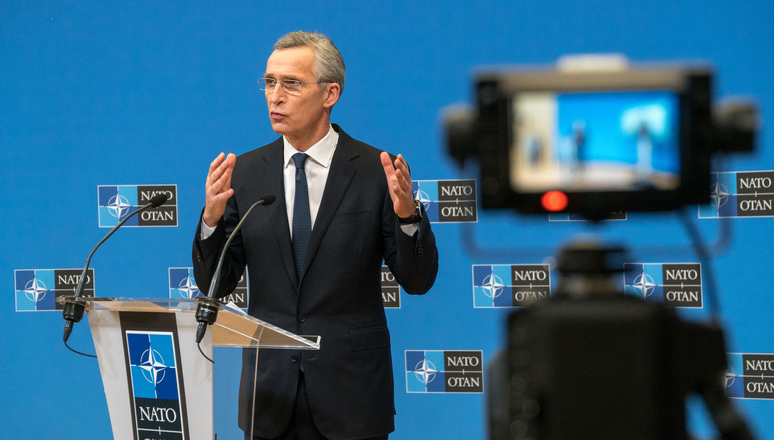NATO will increase its presence in Iraq following the U.S. drawdown in the country, but its future force size in Afghanistan is still up in the air as violence remains high.
The alliance’s presence in Iraq will grow from 500 to about 4,000, not including the 2,500 American troops now deployed to the country, NATO Secretary-General Jens Stoltenberg said Feb. 18, following two days of meetings with member nations’ defense leaders. Training activities also will expand to Iraqi security institutions beyond Baghdad, he added.
“Our presence is conditions-based and increases in troop numbers will be incremental,” Stoltenberg said in a press conference.
The announcement comes days after an international contractor was killed and eight others, including a U.S. service member, were wounded in a rocket attack on a military base at the Erbil airport in Iraqi Kurdistan.
Stoltenberg said the Islamic State group remains a threat in Iraq, and Iraqi forces need international support to grow in strength.
“ISIS still operates in Iraq and we need to make sure they’re not able to return,” he said. “We have also seen some increase in attacks by ISIS, and that just highlights the importance of strengthening the Iraqi forces.”
U.S. Defense Secretary Lloyd J. Austin III participated in the meetings, and “reaffirmed the U.S. commitment to the enduring defeat of ISIS, respecting Iraq’s sovereignty, and ensuring long-term regional stability,” according to a Pentagon readout of the meetings.
The U.S. welcomes NATO’s expanded role, and Austin “expressed confidence that all of the work done to date with the Iraqi government and security forces will lead to a self-sustainable mission,” according to the Pentagon.
The future in Afghanistan is less clear. The U.S. reduced its presence in the country to about 2,500 last month, with plans to withdraw all forces by May. But American and NATO officials say Taliban violence is still too high, leaving open the possibility that U.S. troops will remain in the country longer.
Stoltenberg said NATO will remain in close communication with allies “in the coming weeks,” as it decides what its force structure will look like in Afghanistan.
“The problem is that we are in a situation where we have a date—1st of May—approaching. And so far we have seen that the peace talks are fragile,” Stoltenberg said. “They are not making so much progress as we want to see. And, therefore, we also, of course, are extremely concerned by the increased level of violence. And, therefore, our message to the Taliban is to reduce violence, negotiate in good faith, and make sure that they stop all cooperation with international terrorist groups.”
The U.S. is conducting a “thorough review of the conditions of the U.S.-Taliban Agreement to determine whether all parties have adhered to those conditions,” according to the Pentagon statement. Austin reiterated the American commitment to a diplomatic effort to end the war, and “he reassured Allies that the U.S. would not undertake a hasty or disorderly withdrawal from Afghanistan,” according to the statement.
